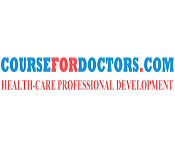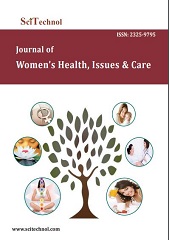Europe Conferences of Conference Series is glad to invite all the experts around the globe working in the arena of Obstetrics, Gynecology, Reproductive Medicine and allied fields of Women’s Health to the upcoming Annual Congress on Women’s Health & Reproductive Medicine (Women’s Health 2018) during December 03-04, 2018 at Lisbon, Portugal.
This Euro Women's Health Congress is based on the theme “Revolutionizing the Future Strategies for Women’s Health Research”.
The European Women’s Health Congress aims to discuss the comprehensive overview of the latest developments, innovations, challenges and strategies in the arena of Women’s Health ranging from Reproductive Medicine, Gynecology, Gynecologic Oncology, Maternal & fetal health, female infertility, In Vitro Fertilization (IVF), Intrauterine insemination (IUI), operative gynaecology and many more.
Many eminent Gynecologists, Fertility specialist, researchers, scientists, and experts from both the Hospitals, Academia, and Industries will participate in this Women’s Health Congress to share their research experience via presentations, interactive case studies, Workshops, Symposiums, Oral Presentations, Poster Presentations, One to one meetings, Networking sessions, e-posters, and Plenary sessions, B2B etc.
To recognize the Young Researchers and expert individuals exhibited outstanding research in the area of Gynaecology, Obstetrics, Reproductive Medicines, and other related expertise of Women’s Health, the Women’s Health 2018 Conference is planned to present the Young Research award through its Young Researcher Forum (YRF), Best Poster Award, and Best Presentation Award.
This Women’s Health Congress offers the best international platform to share the research knowledge among peer global experts, questions raised in the field of Women’s Health can be resolved through the consensus based expert opinions presented here at this Women’s health Congress.
We Welcome all to join us at this upcoming rewarding experience at Lisbon, where you can interact with top experts, engage yourself in a dedicated scientific networking environment, expand your knowledge and enhance your collaborative research in the field of Gynecology, Reproductive Medicine & Women’s Health.
In 2010, global population accounted about 6.15bn of which 49.7% was women. The same trend is expected to be exist by 2025. By 2025, the world population is forecasted to be 8.19bn of which 49.5% will be women. This forecasted figure explains the growth potential of the Womens Health market till 2025. It is generally observed that women live longer as compared to men and undergo rapid hormonal, physiological and emotional changes in their log life time. This factor is now working as a catalyst for providing better education and healthcare services to women in all countries across the globe.

The 21st century is the witness of increasing awareness about the Womens Health in terms of deep focus on good quality education, accessibility of good quality health services, increased social awareness for Women, and accessibility of quality healthcare. The Global Womens Health Market was estimated to be 30.88bn in 2016 and expected to reach over 51.3bn by 2025 at a CAGR of 5.85% as estimated by different independent research firms.
The increase in geriatric population among women pool is proportional to the higher rate of menopause and related disorders driving the growth of the Womens Health market. In this century women are more career oriented due to which the marriage age also getting delayed resulting higher rate of infertility and related cases. Rapid changes in life style and increased stress also another factor that affects the overall women’s health. These factor combinedly driving the Women’s health market and it is predicted that the same trend will continue in near future too.
All major countries also increasing their healthcare budget time to time fuelling the growth of Women’s Health Market. Also, the growing awareness of birth control methods in both developing and developed countries are the major driving factor for the growth of the market. Again, contraception and other birth control methods are supported by the governments in developing nations can be additional growth factor of the market.
Increase involvement of public-private funding towards birth control and grants for infertility treatment is estimated to support the growth of the Womens health market in future. Many organizations also supporting the reimbursement of infertility treatment as higher costs are involved with it. The National Infertility Association provides about $2000-$16000 for the treatment and the medications associated with infertility.

Studies reveal that North America captured highest share of the global Women’s Health Market followed by Europe, Asia Pacific, Latin America, Middle East and Africa in 2016. Around 15% of female population of North America are above 65 years resulting increased demand of Women’s healthcare products. Further higher awareness among women and increased healthcare expanses also contributing to this growth. Asia Pacific is going to be the witness of substantial growth of the market during the forecast period. India and China are the two most populous countries in the world and the government initiatives towards in these two countries and among other APAC regions like Japan, Australia, Singapore, Sri Lanka and Bangladesh to control the population growth with further impact the Women’s Health market in a positive manner. In 2016, Japan shared around 20% of the APAC Women’s Health market. As per the population statistics, 40% of total Japanese population is at 65 or above aged, Also, increased prevalence of diseases such as endometriosis, postmenopausal osteoporosis, and breast cancer will further fuel the growth of the Women’s health market.

The global Women’s health market can be segmented into Postmenopausal osteoporosis, Infertility, Endometriosis and related disorders, Contraceptives, Menopause, and Polycystic ovary syndrome (PCOS).
During 2016, postmenopausal osteoporosis segments among all in the Women’s Health market captured highest share due to increase women population aged 40 or more, launch of new drugs to treat the post-menopausal osteoporosis, presence of huge pipeline drugs during the forecast period and patent expiration that are going to happen in coming years.
As per an independent study, the global Women's health rehabilitation products market is estimated to be around $2.50bn in 2015 and is expected to hit about $3.30bn by 2021, with at a CAGR of about 5.0% during 2016 to 2021. Major factors supporting the growth of the Women's Health rehabilitation market include increased geriatric and obese women numbers, adaptation of technologies for women's health rehabilitation, increased chronic diseases, increased public private funding creating a new avenue for this women's health rehabilitation market.

Women's Health rehabilitation market can be segmented into urinary tract infection, breast cancer, chronic pelvic pain, osteoporosis, lymphedema, orthopaedic, prenatal and postnatal care products. Among all, urinary tract infection (UTI) products captured about 20% of the women's health rehabilitation market share and is expected to reach $750M BY 2021 with a CAGR growth of 5.5%. This growth is supported by increased prevalence of UTI women. Breast cancer is the next prevailed disease supporting the growth of the market.
Women’s Healthcare drugs market was reported to be about $1739m in 2016 and forecasted to grow at a CAGR of 2.90% to hit $2316m by end of 2027. The overall growth will be at a CAGR of 2.60% by 2021 and will slowly increase to 2,68% by 2027. The pipeline products of the various companies are expected to impact the positive growth of the market during the forecasted period.

Global Women’s Health therapeutics market was valued about $18.3bn in 2012. The market is estimated to grow from around $19bn in 2013 to about $22.5bn by the end of 2018, with at a CAGR of 3.5% during the forecast period.

Global Contraceptive market was estimated to be $19.8bn in 2015 and is poised to grow and to reach $33.6bn by 2023 with a CAGR growth of 6.8% during this period. Growing demands of population and increased cases of STDs, increased demand of unwanted pregnancy control, increased awareness among women driving the growth of this contraceptive market. Contraceptive pills are most lucrative segments in the market and is poised to grow at a CAGR of 3.5% from 2016 to 2023. The overall contraceptive market is predominated by Condoms segment. Among all the countries, North America is dominating the Contraceptive market followed by Asia Pacific, Europe, LATAM & the EMA.

Key players/ companies in the global Women’s health and reproductive medicine:
Bayer, Allergan, Merck, Pfizer, Teva, Agile Therapeutics, GSK, Janssen, Amgen, AstraZeneca, Novartis, Novo Nordisk, Eli Lilly, Ferring, Apothecus Pharma, Blairex , Bristol-Myers Squibb, EffRx, HLL Lifecare, Lipocine, Ligand Pharma, Lupin , Mayer, Medicines 360, Gedeon Richter, Neurocrine Biosciences, Sanofi, Valeant Pharmaceuticals, Vertical Pharmaceuticals, Veru Healthcare and Pantarhei Bioscience etc.
Major Contraceptive products:
Addyi (flibanserin), Duavee (conjugated estrogens/bazedoxifene), Intrarosa, Quartette (levonorgestrel/ethinyl estradiol and ethinyl estradiol), Aftera, AfterPillc, Athentia Next, EContra Ezd, Fallback Solo, My Way, Next Choice One Dose, Opcicon One-Step, Option 2, Plan B One-Step, Take Action, Afirmelle, Altavera, Amethia, Reclast/Aclasta, Amethia Lo, Amethyst, Aubra, Ayuna, Aviane, Camrese, CamreseLo, Chateal, Crysellee, Elineste, Enpresse, Falmina, Introvale, Jolessa, Kurvelo, Lessina, Minastrin 24 Fe, Levonest, Levora, Mirena, LoSeasonique, Low-Ogestrele, Lutera, Marlissa, Myzilra, Nordette, Orsythia, Portia, Quasense, Seasonale, Seasonique, Setlakin, Prolia, Sronyx, Ortho-Tri-Cy LO 28, Triphasil, Trivora, Vienva, Evista, NuvaRing, Zometa, Forteo, Premarin, and Actonel etc.
























